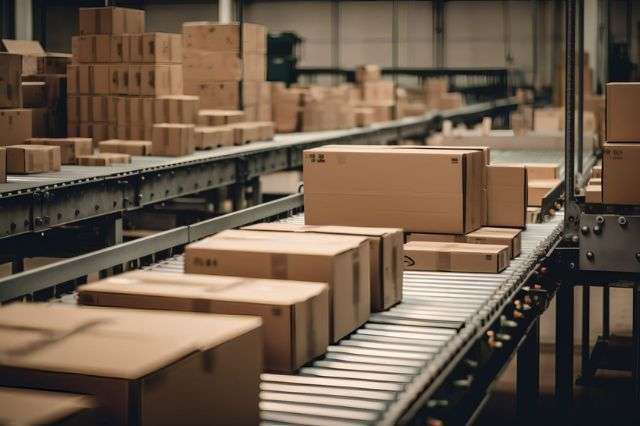The world of business is dynamic, presenting challenges that require innovative solutions. For entrepreneurs, especially those in the manufacturing, construction, and shipping sectors, efficient material handling is critical.
For instance, it’s common for bulk bag manufacturers to invest in effective material handling methods. This approach ensures smooth operations, reduces waste, and increases overall productivity. Achieving such efficiency requires a strategic approach, where a solid understanding of various elements is crucial.
This guide explores strategies that can revolutionize your approach to material handling, paving the way for higher efficiency and increased productivity.
Know Your Inventory
Efficient material handling begins with a thorough understanding of your inventory. It involves more than a simple count; you must delve into the specifics.
Here are some factors to consider:
- Physical Characteristics: Understand the weight, size, and shape of your products. These factors dictate the type of handling equipment required and inform storage requirements. For example, heavy items might require special shelving or lifting equipment, while oversized items might demand more floor space.
- Fragility: Consider the durability of your items. Breakable goods will require different handling techniques compared to sturdy ones. Proper handling is essential not just for minimizing damage and losses but also for preventing accidents.
- Hazardous Properties: Some products may possess properties that necessitate special handling protocols. If you’re dealing with flammable, corrosive, or toxic substances, you’ll need to follow specific safety regulations.
- Storage Requirements: Consider the specific storage conditions each item requires. Some goods may need to be kept at certain temperatures or humidity levels, while others might have legal storage requirements.
Understanding these aspects of your inventory will guide you in selecting appropriate equipment, streamlining your workflow, and upholding safety standards in your operations.
Understand Your Workflow
For efficient material handling, it’s vital to comprehend your workflow fully. The term ‘workflow’ refers to the sequence of processes your materials go through from receiving to shipping. Understanding this chain of operations helps identify areas for improvement.
Start by documenting every step of your process. It’s often surprising how many steps a product goes through before it’s ready for shipment. Typical stages might include:
- Receiving: This is where the materials first enter your facility. Consider how they’re offloaded from the delivery vehicle and where they’re initially stored.
- Storage: Consider how materials are stored. Are they organized in a specific way? Is the storage method effective and efficient?
- Processing: Here’s where the materials are used in production. Consider how they’re moved to the production area and what happens during production. Identify any unnecessary steps that could be eliminated.
- Packing: Once the products are ready, they need to be prepared for shipment. Assess how they’re packed, whether this process protects the product, and if it utilizes space efficiently.
- Shipping: Think about how the products leave your facility. Identify any bottlenecks in getting the products loaded and out the door.
Breaking down your process can reveal inefficiencies you might have overlooked. Perhaps there’s unnecessary movement of materials, or some processes could be completed simultaneously to save time.
Invest In The Right Equipment
Choosing the right equipment for your material handling needs can enhance efficiency, prevent damage, and reduce the risk of workplace injuries.
Here are steps to guide your investment:
- Assess Your Current Needs: Consider the types of materials you handle, their weight, volume, and your facility’s layout. Each of these factors will influence the type of equipment you need, whether it’s a forklift for heavy materials or stacker cranes for high-ceilinged warehouses.
- Examine Your Workflow: Identify any steps that can be automated to boost efficiency. This could involve installing a conveyor system to speed up processing time or utilizing automated guided vehicles (AGVs) for internal transportation.
- Prioritize Ergonomics: Equipment designed with ergonomics in mind can significantly decrease strain on staff, leading to better productivity and a lower risk of injury.
- Think Long-Term: While it’s tempting to go for the cheapest option, quality equipment often provides better value in the long run due to its durability and lower maintenance needs.
- Stay Updated on Technology: The material handling industry is continually evolving, with new, innovative solutions regularly emerging. Staying informed allows you to make optimal decisions for your business.
By following these steps, you can make smart investments in equipment that will significantly enhance your material handling operations, creating a safer, more efficient workflow.
Train Your Staff
The efficiency of material handling hinges greatly on the skill and knowledge of your staff. Training should cover the entire process from receiving to shipping, with an emphasis on your company’s specific procedures. Essential training areas might include:
- Safety Training: Train your staff on safety measures, particularly when handling materials. This includes correct lifting techniques, proper use of equipment, and adherence to safety regulations.
- Equipment Training: Ensure your staff knows how to operate equipment effectively and safely.
- Process Training: Make sure your staff understands your workflow. They should know the steps that materials go through, from receiving to shipping.
- Quality Control Training: Teach your staff to recognize defects or issues. This will allow problems to be identified and rectified quickly.
A well-trained team is an asset. They’ll not only carry out their tasks more efficiently but also contribute to a safer, more productive workplace.
Apply Lean Principles
Lean principles stem from a Japanese management philosophy known as ‘Lean Manufacturing,’ aiming to minimize waste while maximizing productivity. These principles can be adapted to improve efficiency in material handling.
By embracing lean principles, you’ll aim to eliminate any elements of your operation that don’t add value. Start by identifying inefficiencies in your current system, such as time wasted on unnecessary processes, redundant steps, or cluttered workspaces impeding movement.
Once you’ve identified these ‘wastes,’ strategize ways to eliminate them. This might involve streamlining processes by eliminating unnecessary steps, organizing workspaces for optimal efficiency, or improving inventory management to avoid overstocking or understocking.
Remember, continuous improvement is at the heart of lean principles. Regularly review and adjust your operations, aiming for constant enhancement.
Conclusion
Harnessing the power of efficient material handling can be transformative for your business, setting the stage for increased productivity, safety, and profitability. The keys are understanding your inventory and workflow, investing in the right equipment, training your staff, and applying lean principles.
It’s time to put these strategies into action. Change doesn’t happen overnight, but with consistent effort, you can significantly enhance productivity and your bottom line.
Related












